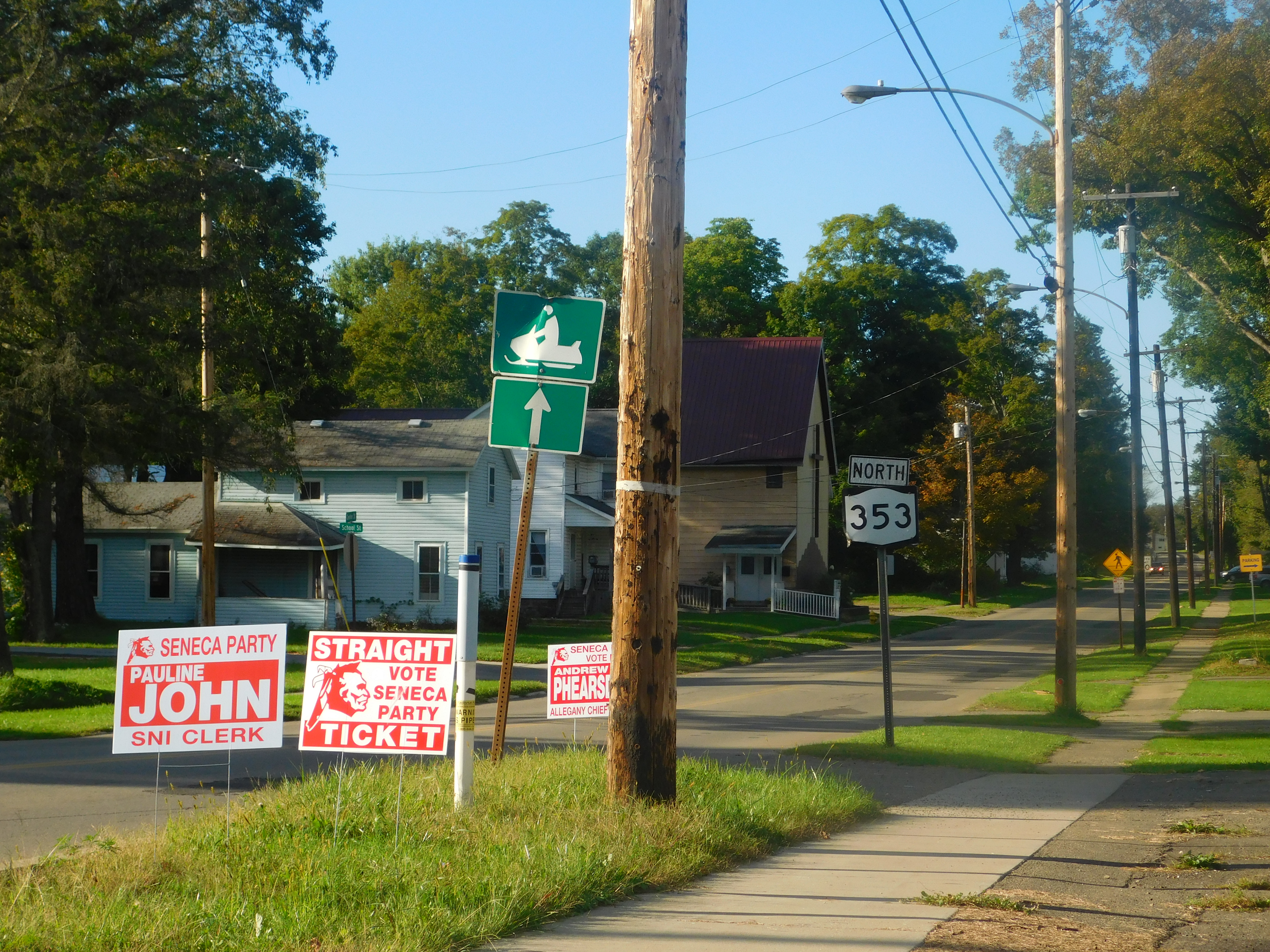|
Party Identification
Party identification refers to the political party with which an individual is affiliated with. Party identification is typically determined by the political party that an individual most commonly supports (by voting or other means). Some researchers view party identification as "a form of social identity", in the same way that a person identifies with a religious or ethnic group. This identity develops early in a person's life mainly through family and social influences. This description would make party identification a stable perspective, which develops as a consequence of personal, family, social, and environmental factors. Other researchers consider party identification to be more flexible and more of a conscious choice. They see it as a position and a choice based on the continued assessment of the political, economic, and social environment. Party identification can increase or even shift by motivating events or conditions in the country. Party identification has been most s ... [...More Info...] [...Related Items...] OR: [Wikipedia] [Google] [Baidu] |
Political Party
A political party is an organization that coordinates candidates to compete in a particular area's elections. It is common for the members of a party to hold similar ideas about politics, and parties may promote specific political ideology, ideological or policy goals. Political parties have become a major part of the politics of almost every country, as modern party organizations developed and spread around the world over the last few centuries. Although List of countries without political parties, some countries have no political parties, this is extremely rare. Most countries have Multi-party system, several parties while others One-party state, only have one. Parties are important in the politics of autocracies as well as democracies, though usually Democracy, democracies have more political parties than autocracies. Autocracies often have a single party that Government, governs the country, and some political scientists consider competition between two or more parties to ... [...More Info...] [...Related Items...] OR: [Wikipedia] [Google] [Baidu] |
Social Identity
Identity is the set of qualities, beliefs, personality traits, appearance, or expressions that characterize a person or a group. Identity emerges during childhood as children start to comprehend their self-concept, and it remains a consistent aspect throughout different stages of life. Identity is shaped by social and cultural factors and how others perceive and acknowledge one's characteristics. The etymology of the term "identity" from the Latin noun ''identitas'' emphasizes an individual's "sameness with others". Identity encompasses various aspects such as occupational, religious, national, ethnic or racial, gender, educational, generational, and political identities, among others. Identity serves multiple functions, acting as a "self-regulatory structure" that provides meaning, direction, and a sense of self-control. It fosters internal harmony and serves as a behavioral compass, enabling individuals to orient themselves towards the future and establish long-term goals. A ... [...More Info...] [...Related Items...] OR: [Wikipedia] [Google] [Baidu] |
Social Influence
Social influence comprises the ways in which individuals adjust their behavior to meet the demands of a social environment. It takes many forms and can be seen in conformity, socialization, peer pressure, obedience (human behavior), obedience, leadership, persuasion, sales, and marketing. Typically social influence results from a specific action, command, or request, but people also alter their attitudes and behaviors in response to what they perceive others might do or think. In 1958, Harvard psychologist Herbert Kelman identified three broad varieties of social influence. #Compliance (psychology), Compliance is when people appear to agree with others but actually keep their dissenting opinions private. #Identification (psychology), Identification is when people are influenced by someone who is liked and respected, such as a famous celebrity. #Internalisation (sociology), Internalization is when people accept a belief or behavior and agree both publicly and privately. Morton Deu ... [...More Info...] [...Related Items...] OR: [Wikipedia] [Google] [Baidu] |
The American Voter
''The American Voter'', published in 1960, is a seminal study of voting behavior in the United States, authored by Angus Campbell, Philip Converse, Warren Miller, and Donald E. Stokes, colleagues at the University of Michigan. Among its controversial conclusions, based on one of the first comprehensive studies of election survey data (what eventually became the National Election Studies), is that most voters cast their ballots primarily on the basis of partisan identification (which is often simply inherited from their parents), and that independent voters are actually the least involved in and attentive to politics.Witten, D. (2015"The American Voter"(blog, 2 November 2015)Campbell, A., Converse, P.E., Miller, W.E., & Stokes, D.E. (1980''The American Voter''.University of Chicago Press. This theory of voter choice became known as the Michigan Model. It was later extended to the United Kingdom by David Butler and Donald Stokes in ''Political change in Britain''. ''The Ame ... [...More Info...] [...Related Items...] OR: [Wikipedia] [Google] [Baidu] |
Political Realignment
A political realignment is a set of sharp changes in party-related ideology, issues, leaders, regional bases, demographic bases, and/or the structure of powers within a government. In the fields of political science and political history, this is often referred to as a critical election, critical realignment, or realigning election. These changes result in a restructuring of political focus and power that lasts for decades, usually replacing an older dominant coalition. Scholars frequently invoke the concept in Elections in the United States, American elections as this is where it is most common, though the experience also does occur in governments across the globe. It is generally accepted that the United States has had five distinct party systems, each featuring two major parties attracting a consistent political coalition and following a consistent party ideology, separated by four realignments. Two of the most apparent examples include the 1896 United States presidential electio ... [...More Info...] [...Related Items...] OR: [Wikipedia] [Google] [Baidu] |
Mothers
A mother is the female parent of a child. A woman may be considered a mother by virtue of having given birth, by raising a child who may or may not be her biological offspring, or by supplying her ovum for fertilisation in the case of gestational surrogacy. A biological mother is the female genetic contributor to the creation of the infant, through sexual intercourse or egg donation. A biological mother may have legal obligations to a child not raised by her, such as an obligation of monetary support. An adoptive mother is a female who has become the child's parent through the legal process of adoption. A putative mother is a female whose biological relationship to a child is alleged but has not been established. A stepmother is a non-biological female parent married to a child's preexisting parent, and may form a family unit but generally does not have the legal rights and responsibilities of a parent in relation to the child. A father is the male counterpart of a mother. ... [...More Info...] [...Related Items...] OR: [Wikipedia] [Google] [Baidu] |
LGBTQ+
LGBTQ people are individuals who are lesbian, gay, bisexual, transgender, queer, or questioning. Many variants of the initialism are used; LGBTQIA+ people incorporates intersex, asexual, aromantic, agender, and other individuals. The group is generally conceived as broadly encompassing all individuals who are part of a sexual or gender minority, including all sexual orientations, romantic orientations, gender identities, and sex characteristics that are not heterosexual, heteroromantic, cisgender, or endosex, respectively. Scope and terminology A broad array of sexual and gender minority identities are usually included in who is considered LGBTQ. The term ''gender, sexual, and romantic minorities'' is sometimes used as an alternative umbrella term for this group. Groups that make up the larger group of LGBTQ people include: * People with a sexual orientation that is non-heterosexual, including lesbians, gay men, bisexual people, and asexual people * People who are ... [...More Info...] [...Related Items...] OR: [Wikipedia] [Google] [Baidu] |
Two-party System
A two-party system is a political party system in which two major political parties consistently dominate the political landscape. At any point in time, one of the two parties typically holds a majority in the legislature and is usually referred to as the ''majority'' or ''governing party'' while the other is the ''minority'' or ''opposition party.'' Around the world, the term is used to refer to one of two kinds of party systems. Both result from Duverger's law, which demonstrates that "winner-take-all" or "first-past-the-post" elections produce two dominant parties over time.Regis PublishingThe US System: Winner Takes All Accessed August 12, 2013, "...Winner-take-all rules trigger a cycle that leads to and strengthens a system of few (two in the US) political parties..." The first type of ''two-party system'' is an arrangement in which all (or nearly all) elected officials belong to one of two major parties. In such systems, minor or third parties rarely win any seats i ... [...More Info...] [...Related Items...] OR: [Wikipedia] [Google] [Baidu] |
Dealignment
Dealignment, in political science, is a trend or process whereby a large portion of the electorate abandons its previous partisan affiliation, without developing a new one to replace it. It is contrasted with political realignment. Many scholars argue that the trends in elections in the United States over the last several decades are best characterized as dealignment, evident in the portion of Americans identifying with a political party declining sharply between 1964 and 1976 from approximately 75 percent to 63 percent. It is also believed the United Kingdom has become dealigned from social class over the past three decades. Dealignment does not refer to an individual losing their party affiliation, but a widespread trend as many people formally abandon the party to which they had been previously tied. Essentially one ceases voting for the political candidates that are formally sponsored by that party. Dealignment can be seen in the rise of independent candidates. In dealignment, ... [...More Info...] [...Related Items...] OR: [Wikipedia] [Google] [Baidu] |
Bayesian Inference
Bayesian inference ( or ) is a method of statistical inference in which Bayes' theorem is used to calculate a probability of a hypothesis, given prior evidence, and update it as more information becomes available. Fundamentally, Bayesian inference uses a prior distribution to estimate posterior probabilities. Bayesian inference is an important technique in statistics, and especially in mathematical statistics. Bayesian updating is particularly important in the dynamic analysis of a sequence of data. Bayesian inference has found application in a wide range of activities, including science, engineering, philosophy, medicine, sport, and law. In the philosophy of decision theory, Bayesian inference is closely related to subjective probability, often called "Bayesian probability". Introduction to Bayes' rule Formal explanation Bayesian inference derives the posterior probability as a consequence of two antecedents: a prior probability and a "likelihood function" derive ... [...More Info...] [...Related Items...] OR: [Wikipedia] [Google] [Baidu] |
Straight Ticket Voting
In political science, straight-ticket voting or straight-party voting refers to the practice of voting for every candidate that a political party has on a general election ballot. In some states, ballots may offer a straight-ticket voting option, sometimes known as a master lever or group voting ticket, that allows voters to check a box and vote for all of a party's candidates, instead of voting for each race individually. History The vast majority of ballots cast in the United States before the 1960s were straight-ticket ballots. However, straight-ticket voting experienced a steady decline through the 2000s as a result of many political factors. The drift of the Democratic Party away from its roots in the Reconstruction era's Redeemers led to the collapse of straight-ticket voting in the Solid South, as southern voters began to vote for Dixiecrats (Conservative southern Democrats) at the local level while backing Republicans at the national level. At the same time, the Democra ... [...More Info...] [...Related Items...] OR: [Wikipedia] [Google] [Baidu] |



